Healthy Back
50 Simple Techniques for a Pain-Free Back By Olivia H. Miller with Beverly Biondi, Licensed Physical Therapist Its nearly as prevalent as the common cold, weighing in as the second most frequent reason for visits to the doctor. It accounts for 25 percent of absenteeism, and it is estimated that in industrialized countries a whopping 80 percent of the population will suffer from it at some point. Yes, were talking about the modern aching back. More than 31 million people in the United States alone suffer from back pain, collectively spending around $50 million a year in search of relief. Lower-back pain is
the most prevalent cause of disability for people under the age of 45.
Thats a lot of money, a lot of missed days at work, and a lot of people in pain. Back problems may be acute (lasting approximately six to eight weeks), recurrent (repeated episodes of acute symptoms), or chronic (lasting more than three months). The causes of back pain are many, ranging from injury, trauma, illness, degenerative disorders, and conditions such as arthritis and spinal deformities to muscular tension, strain, poor posture, insufficient rest, lack of exercise, ergonomic problems, nutritional deficiencies, and emotional stress.
Preventing Back Problems
For the most part,
Healthy Back focuses on the prevention and reduction of back pain that is caused by lifestyle issues: too much sitting in the car, at the computer, on the couch; not enough or improper exercise; incorrect movement; poor postural habits; and, for many of us, those frequent companions named stress and anxiety. One of the most effective ways to counteract these contributors to poor back health is to follow a regular program of proper exercise, stretching, and relaxation. If you happen to be someone who doesnt have back issues, congratulations! The exercises and tips in
Healthy Back will help you remain a member of the 20th-percentile club by keeping your back strong and flexible.
If youve had back problems in the past and/or are dealing with them now, please consult a physician or physical therapist before using the book. We cannot stress enough the importance of knowing the underlying condition(s) and what exercises may or may not be suitable for you.
Using This Book
Healthy Back contains 47 activities (6 warm-ups and 41 exercises) and three meditations chosen specifically to help you maintain a healthy back and spine and to prevent back injury and pain. The activities feature easy-to-read, bulleted instructions explaining how to do the exercise safely, correctly, and effectively, along with a list of benefits associated with that exercise and a special tip, called Back Talk. Each activity also includes clear and simple drawings that illustrate how to perform each exercise correctly.
Healthy Back includes exercises done from seated, kneeling, standing, prone (on the stomach), and supine (on the back) positions.
Healthy Back includes exercises done from seated, kneeling, standing, prone (on the stomach), and supine (on the back) positions.
Collectively, this group of exercises will help your body and mind in many ways: stretching the spine, improving posture and alignment, increasing flexibility, strengthening and toning the core and supporting muscles, relieving back strain and pain, loosening areas of tightness, decreasing stress and tension, and promoting relaxation. Begin with a few warm-ups to prepare your body and limber up your back. You may wish to develop an exercise routine by going through the b00k and choosing several exercises from each section. Or you might prefer to follow one of the recommended sequences listed at the end of this section. To paraphrase an old saying: Youre only as young as your spine is strong and flexible. Use Healthy Back on a regular basis and never again say, Oh, my aching back!
Cautions
Healthy Back is not intended as a substitute for a certified instructor, trainer, physical therapist, or exercise class.
If you havent exercised before, are pregnant or elderly, have a chronic condition, or have back or neck problems, please consult a medical practitioner before you begin. Dont do any exercise that causes undue pain, shortness of breath, or dizziness. Not all exercises are suitable for everyone. Your physical condition and health are important factors in determining which exercises and advice may be appropriate for you. This or any other exercise program may result in injury. The author, consultant, illustrator, and publisher of this book disclaim any liability from any injury that may result from the use, proper or improper, of any exercise or advice contained in this deck.
Please consult your professional health care provider for information and advice on the suitability of your exercise program. OLIVIA H. MILLER specializes in writing about alternative ways to maintain physical, emotional, and spiritual health. She is the author of Yoga, Yoga II, Stretch, Prenatal Yoga, Chakra, Fitness Ball, and Essential Yoga, all published by Chronicle Books. She lives on Cape Cod. BEVERLY BIONDI, physical therapist, travels both nationally and internationally to teach back-care conferences to medical professionals.
She owns and runs a busy physical therapy practice on Cape Cod.
Recommended Sequences
Relaxation
Any meditation
Stretching/Flexibility
Overall Strengthening
Abdominal Strengthening
For Improving Posture
Too Much Sitting
Table of Contents
Warm-Ups (6)
Seated Exercises (2)
Kneeling Exercises (5)
Standing Exercises (12)
Prone Exercises (7)
Side-Lying Exercise (1)
Supine Exercises (14)
Meditations (3)
1 Neck Rotations and Rolls
 WARM-UP(FIG. 1)
WARM-UP(FIG. 1) Sit with your back straight, head upright, shoulders relaxed. Slowly and gently turn your head to the right, taking care that your chin does not go beyond your right shoulder. Hold the stretch for 10 to 15 seconds as you inhale and exhale deeply.
(FIG. 2) Rotate your head to the left, making sure your chin does not go beyond your left shoulder, and repeat the stretch on that side. 2) Rotate your head to the left, making sure your chin does not go beyond your left shoulder, and repeat the stretch on that side.
Repeat 3 to 5 times on each side. (FIG. 3) Lower your chin toward your chest. Slowly roll your left ear over the left shoulder. Hold for 10 to 15 seconds. Return head to center.
Repeat the neck roll on the opposite side. Do one more repetition on each side.
Benefits
Increases neck flexibility Improves neck mobility Relieves residual tension in the neck and shoulders back talk Loosening the neck muscles helps increase circulation to the brain. If youre feeling foggy, do these exercises.
2 Chin Tuck
 WARM-UP
WARM-UP Sit with your spine comfortably erect. Shoulders are down and away from the ears.
Hold your head upright. Draw your chin in toward your neck. To help with this subtle movement, lightly place your index and middle fingers on your chin. Dont tip your chin up or down. Return head to neutral.


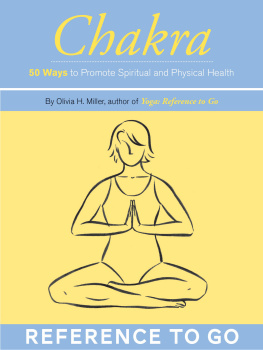
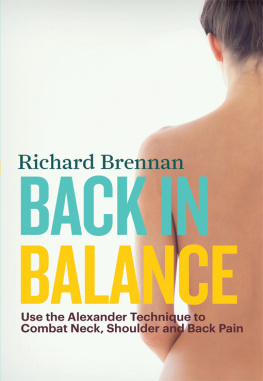
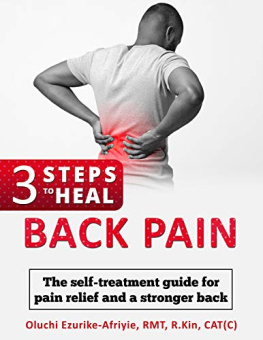
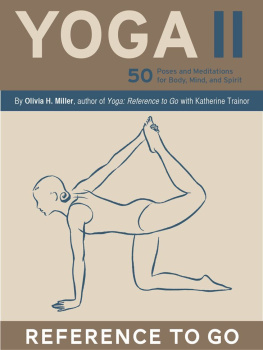

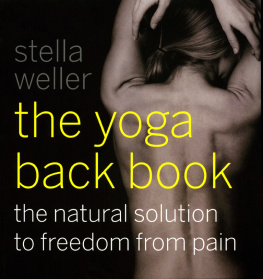

 WARM-UP(FIG. 1) Sit with your back straight, head upright, shoulders relaxed. Slowly and gently turn your head to the right, taking care that your chin does not go beyond your right shoulder. Hold the stretch for 10 to 15 seconds as you inhale and exhale deeply. (FIG. 2) Rotate your head to the left, making sure your chin does not go beyond your left shoulder, and repeat the stretch on that side. 2) Rotate your head to the left, making sure your chin does not go beyond your left shoulder, and repeat the stretch on that side.
WARM-UP(FIG. 1) Sit with your back straight, head upright, shoulders relaxed. Slowly and gently turn your head to the right, taking care that your chin does not go beyond your right shoulder. Hold the stretch for 10 to 15 seconds as you inhale and exhale deeply. (FIG. 2) Rotate your head to the left, making sure your chin does not go beyond your left shoulder, and repeat the stretch on that side. 2) Rotate your head to the left, making sure your chin does not go beyond your left shoulder, and repeat the stretch on that side.  WARM-UP Sit with your spine comfortably erect. Shoulders are down and away from the ears.
WARM-UP Sit with your spine comfortably erect. Shoulders are down and away from the ears.